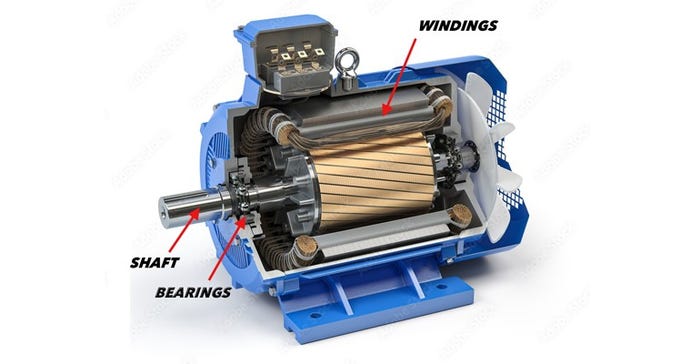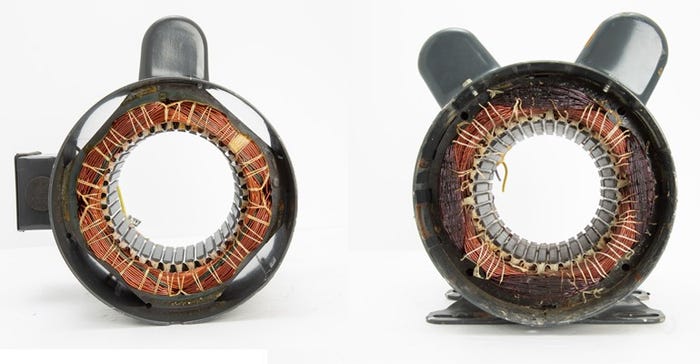What happens when an electric motor burns out?
October 1, 2022

Sponsored Content
We typically refer to an electrical motor that has quit working as being burned out. Is that what really happens? Do the insides of a motor burn up, and is that why it stopped running? Let's take a quick look at a motor's normal operation and how it reaches a burned out condition.

Inside a motor, there is a band of copper wire called the windings. As current flows through the windings, it creates a rotating magnetic field, causing the motor shaft to rotate. The motor will continue to operate if the windings receive a steady, stable electrical supply. Insulating varnish is applied to the windings to ensure electricity flows through the entire coil. Without this insulation, the current would flow across the wires, causing a short circuit.
Farm Duty motors have a design factor allowing them to operate at temperatures as high as 200 degrees. The insulation varnish can withstand temperatures as high as 300 for short periods. Under normal operating conditions, the varnish coating adequately protects the windings preventing short-circuiting.

When the internal temperature of a motor repeatedly rises above its typical operating temperatures, the varnish coating becomes damaged. This damage allows the electrical current to short circuit across wires without completing its normal travel path through the windings. Reducing the circuit increases the heat output, further damaging the insulation. A stable voltage supply no longer exists, and the shaft fails to turn. In severe cases, the wiring becomes so hot the insulation varnish melts and pools in the bottom of the motor housing.
The reasons causing a motor to overheat are varied. These include improper wiring, loose connections, or undersized line sizes causing a voltage drop at the motor. In other instances, slippage from loose belts transfers heat to the motor through the shaft. Choosing the wrong size replacement pulley can also quickly overload the engine.
Preventing motors from being damaged by overheating begins by selecting a suitable replacement motor along with installing and wiring it correctly. Situations where motors fail repeatedly, are probably not due to manufacturing defects. In these cases, looking deeper for an underlying cause is necessary. In part 2 of this series, we will discuss steps to prevent motors from overheating.
About the Author(s)
You May Also Like





